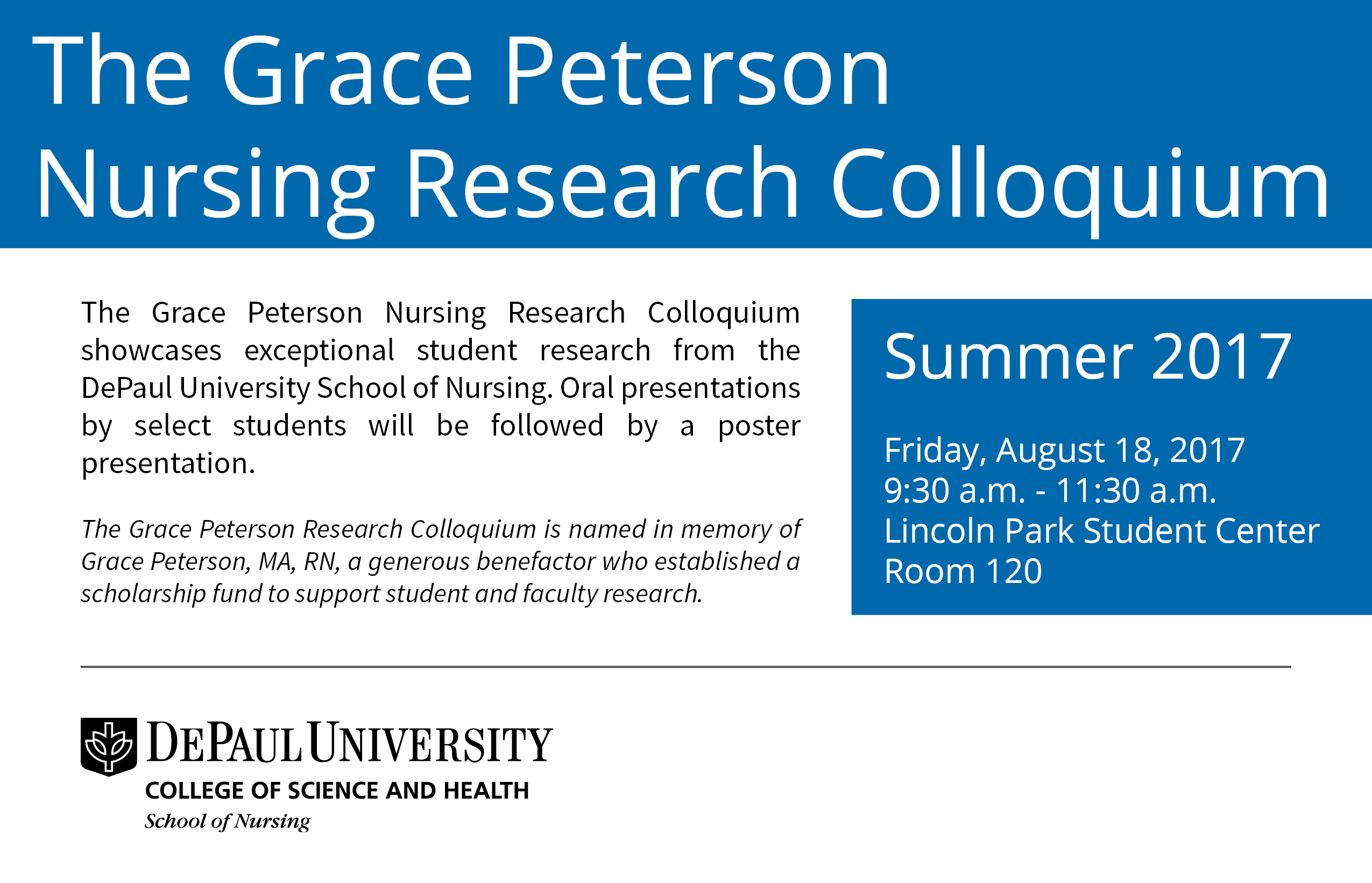Title of Research
Start Date
18-8-2017 10:00 AM
End Date
18-8-2017 11:30 AM
Abstract
Current Use of Muscle Relaxants and Laryngeal Mask Airways: A Survey of Anesthesia Providers’ Knowledge and Beliefs for Best Practice
Amber Muhlhan, BSN, RN, DNP Candidate and Claritess Sarangay, BSN, RN, DNP Candidate
Faculty Sponsor: Julia Feczko CRNA, DNP- Chair and Pamela Schwartz, CRNA, DNP
Background: Current clinical studies have shown that muscle relaxant use has beneficial effects with laryngeal mask airways; however, knowledge and beliefs differ regarding this practice amongst anesthesia providers.
Objectives: The purpose of this study was to evaluate the knowledge and beliefs of anesthesia providers about muscle relaxant use with laryngeal mask airways before and after reviewing an evidence-based educational module.
Method: A descriptive online survey research design was utilized to determine Illinois Association of Nurse Anesthetist members’ knowledge and beliefs regarding muscle relaxant use with laryngeal mask airways.
Results: At pre-test, the study participants had deficient knowledge and negative beliefs regarding the use of muscle relaxants with laryngeal mask airways. After reviewing an evidence-based educational module, the paired t test showed that the study participants demonstrated a statistically significant increase in knowledge and a positive belief towards incorporating muscle relaxants with laryngeal mask airways into their practice (n=72; t=-3.856; df=71; p < 0.001). The evidence-based educational module had a medium size effect towards the change in the mean scores for knowledge and beliefs (Cohen's d=0.45).
Conclusion: This study found that study participants have a lack of knowledge and negative beliefs towards muscle relaxant use with laryngeal mask airways prior to an educational intervention. An evidence-based educational module proved to be an effective way to educate providers and alter their negative beliefs related to best practice. There is a need for additional studies that would support a position statement for a standard of practice and policy making for muscle relaxant use with laryngeal mask airways in contemporary anesthesia practice.
Included in
Current Use of Muscle Relaxants and Laryngeal Mask Airways: A Survey of Anesthesia Providers’ Knowledge and Beliefs for Best Practice
Current Use of Muscle Relaxants and Laryngeal Mask Airways: A Survey of Anesthesia Providers’ Knowledge and Beliefs for Best Practice
Amber Muhlhan, BSN, RN, DNP Candidate and Claritess Sarangay, BSN, RN, DNP Candidate
Faculty Sponsor: Julia Feczko CRNA, DNP- Chair and Pamela Schwartz, CRNA, DNP
Background: Current clinical studies have shown that muscle relaxant use has beneficial effects with laryngeal mask airways; however, knowledge and beliefs differ regarding this practice amongst anesthesia providers.
Objectives: The purpose of this study was to evaluate the knowledge and beliefs of anesthesia providers about muscle relaxant use with laryngeal mask airways before and after reviewing an evidence-based educational module.
Method: A descriptive online survey research design was utilized to determine Illinois Association of Nurse Anesthetist members’ knowledge and beliefs regarding muscle relaxant use with laryngeal mask airways.
Results: At pre-test, the study participants had deficient knowledge and negative beliefs regarding the use of muscle relaxants with laryngeal mask airways. After reviewing an evidence-based educational module, the paired t test showed that the study participants demonstrated a statistically significant increase in knowledge and a positive belief towards incorporating muscle relaxants with laryngeal mask airways into their practice (n=72; t=-3.856; df=71; p < 0.001). The evidence-based educational module had a medium size effect towards the change in the mean scores for knowledge and beliefs (Cohen's d=0.45).
Conclusion: This study found that study participants have a lack of knowledge and negative beliefs towards muscle relaxant use with laryngeal mask airways prior to an educational intervention. An evidence-based educational module proved to be an effective way to educate providers and alter their negative beliefs related to best practice. There is a need for additional studies that would support a position statement for a standard of practice and policy making for muscle relaxant use with laryngeal mask airways in contemporary anesthesia practice.


